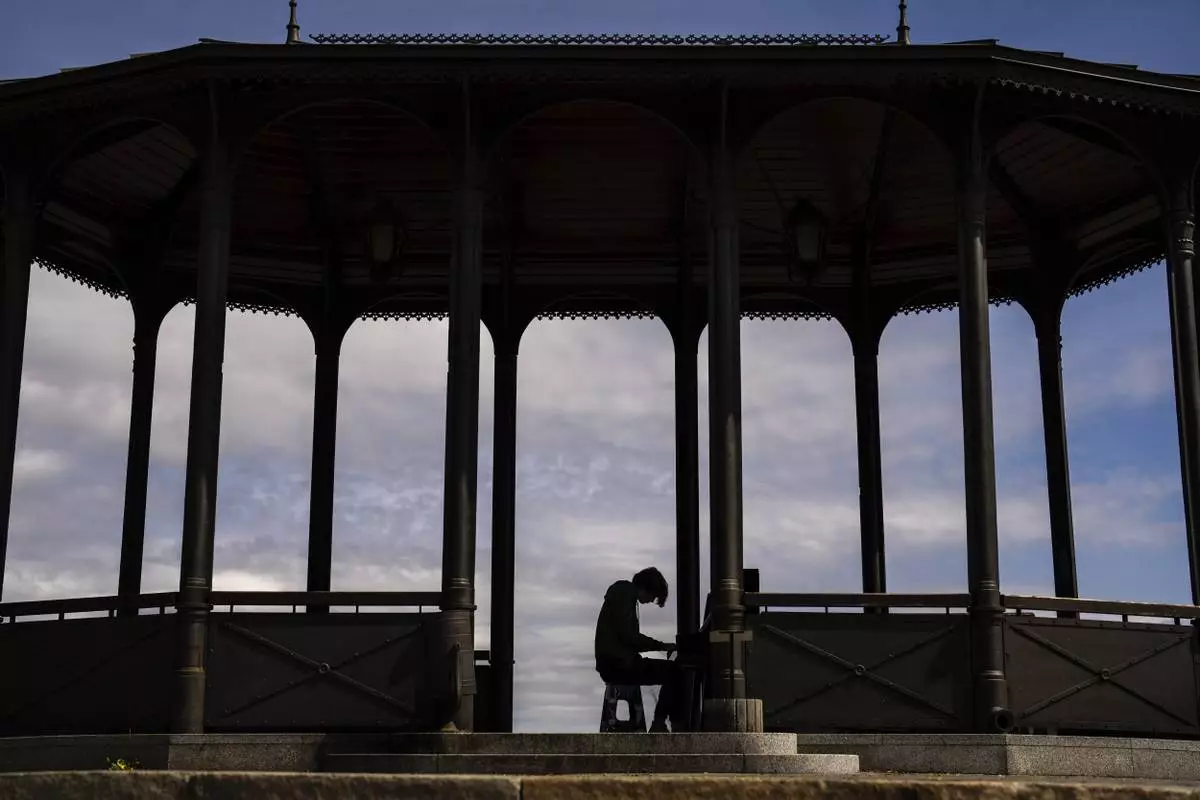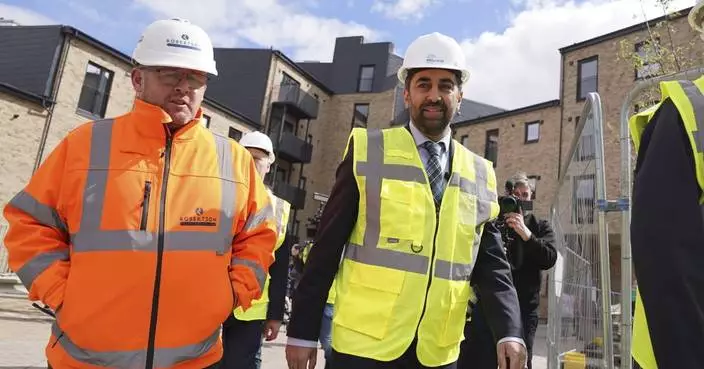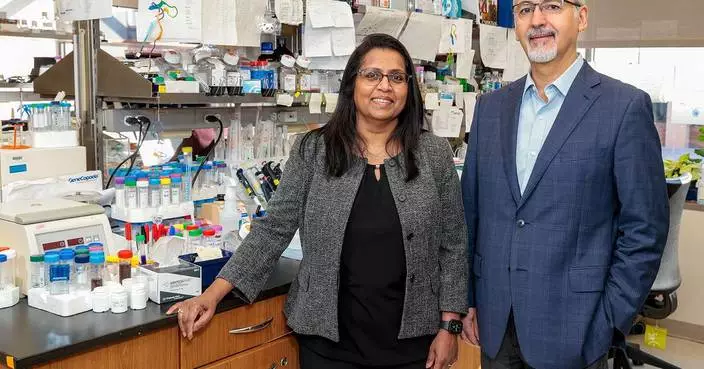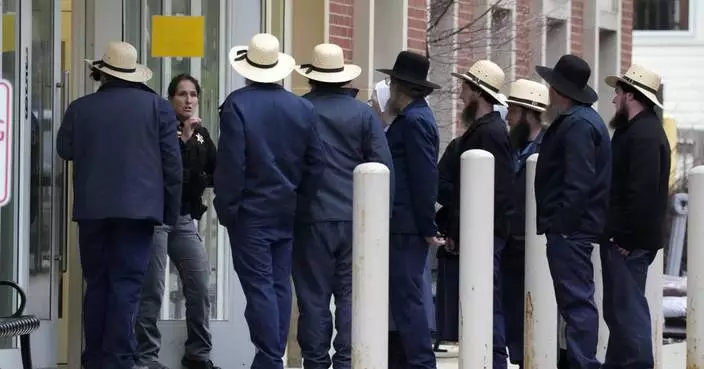Alexandra lived for years as a ticking timebomb, at risk of going into cardiac arrest again at any time.
A woman who went into cardiac arrest during a day out at the beach with her family aged six has revealed how a tick bite more than two decades later finally led to a diagnosis for the rare condition that caused it.
As a child, Alexandra Wall, 33, a project coordinator of south-west London, would often have palpitations, which, at times, felt as if her heart was “bouncing out of her chest”.
Then, terrifyingly, at just six years old, she lost control of her body while swimming and went into cardiac arrest on the beach, in front of her stricken family.
But, despite baffled doctors doing years of tests, no-one could work out what – if anything – was wrong with Alexandra’s heart, which appeared to be normal when scanned.
She said: “There were points where I did start to think, ‘Is this actually nothing? Is it just me, and the way my heart is?’”
For 24 years, Alexandra continued to live with ongoing palpitations, unaware she could have suffered a cardiac arrest at any time.
Then, in 2015, after a tick bite sparked Lyme disease – a type of bacterial infection – Alexandra was given an appointment with a cardiologist, who finally diagnosed her with Brugada syndrome.
A rare and potentially deadly condition, which affects the way electrical signals pass through the heart, only 5 in every 10,000 people are thought to be affected, according to the USA’s National Organisation for Rare Disorders.
The NHS website now says: “Brugada syndrome is a serious condition that people can die from, but the chances of this happening can be significantly reduced if the condition is diagnosed and treated.”
But when Alexandra went into cardiac arrest in 1991, no-one had heard of the syndrome, which was only first reported in medical literature in 1992.
She explained: “That’s why it took so long to diagnose me. Doctors did all they could at the time, but there was no way anybody would have known about Brugada. I started showing symptoms when I had palpitations in the late 80s, way before it was first reported.”
Despite wondering over the years if there was actually nothing wrong with her, Alexandra said: “I could never quite shake the feeling that something was wrong, so though the diagnosis was difficult, in a way, I was relieved to finally be believed.”
As her symptoms struck so early on in life, Alexandra, who grew up in Sweden, does not recall the exact age at which they started.
She does, however, recall palpitations and bouts of dizziness as a child.
“The palpitations had no particular trigger. They even happened when I was sitting still. It was like my heart was bouncing out of my chest,” she said.
Concerned, Alexandra’s parents took her for medical tests, but everything came back as normal.
Describing what happened when she was six, and in the Swedish countryside with her family, she recalled: “I was swimming at the beach, when I began feeling like I wasn’t in control of my body. A lady saw and pulled me out of the water, asking if I was okay.
“I just about made it to the towel where my family were sitting, and remember saying to my dad, ‘I’m so tired’ – which was a real red flag as I was always an energetic child. After that, I don’t remember much.”
Piecing together what followed by speaking to her family who were there that day, Alexandra now knows that, just moments later, she went into cardiac arrest.
A bystander who happened to be a nurse leapt into action, performing first aid whilst the emergency services were called.
“From what I have been told, my heart actually stopped, but thankfully everybody kept going and trying to revive me,” said Alexandra. “I can’t imagine what it was like for my family to have seen that.”
She added: “I ended up having to be taken to hospital via a helicopter, which landed on the beach. Thankfully, medics brought me round on the way, and kept asking me questions to keep me conscious.”
In total, Alexandra stayed in hospital for three weeks undergoing investigations.
However, as it was still a year before Brugada would first be reported in medical literature – and the fact that her heart looked normal when scanned – medics remained baffled.
After being discharged, she was closely monitored, returning to hospital every three months for ECG scans, which changed to every six months, then every year as time went on and she remained stable.
Save for continuing palpitations, which she accepted as “my normal”, she was relatively well, keeping active with swimming and ballet.
Then, as she reached her early twenties, her health began to decline as she experienced worsening breathlessness.
“When I was 22, I went back to a cardiologist in Sweden, where I was living at the time, for a Holter test, which meant having a monitor recording my heart for 24 hours,” she said. “But, yet again, it came back fine.
“The trouble with the test was that it was just a snapshot, and it’s really hard to diagnose something from that, especially when my heart visibly looked fine too.”
Still, determined to stay positive, Alexandra tried to push on with life, finishing her studying, travelling the world and even living in New York, USA, before moving to London.
She added: “I tried to be mind over matter. I didn’t want to sit around and let this take over. Plus, I’d had so many tests, I was beginning to think maybe this was just how my heart worked.”
Then, in June 2015, a breakthrough finally came for Alexandra when she was bitten by a tick whilst visiting family in Sweden.
At first, she thought nothing of it, especially when the tell-tale mark such bites leave soon disappeared.
This #RestartAHeart Day, a record-breaking 238,793 people in the UK were trained in life saving CPR! With more life savers in waiting, we’re hoping to improve out-of-hospital cardiac arrest survival rates: https://t.co/Mq0qaarACw pic.twitter.com/bq9x66RPcA
— BHF (@TheBHF) November 16, 2018
But back in London in around October of the same year, she began to suffer with a stiff neck, and night sweats.
“I had been prescribed beta blockers earlier that year to help slow my heart rate, but was struggling with side effects, so thought it may be related to that at first,” she said.
“I stopped taking the beta blockers and some side effects stopped – but the stiff neck and night sweats continued. “I’ve always been someone who tries to work it out for myself rather than rushing straight to the doctors, but I couldn’t work out what was going on.”
The following month, Alexandra went to visit a “phenomenal” GP who diagnosed Lyme disease via a blood test.
In some cases, the infection can spread to the heart, so, given her history, she was referred to a cardiologist at west London’s Royal Brompton Hospital, to be on the safe side.
There, after examining her ECG results and hearing of her various symptoms over the years, Brugada syndrome was mentioned for the first time.
According to the NHS, many people do not realise they have the condition, and it can be caused be a genetic mutation.
In December 2015, Alexandra was given a test whereby ajmaline, a sodium channel blocker, was injected into her body whilst she was hooked up to and EGC to monitor her heart’s rhythm and better understand the electrical signals being produced.
Results indicated heavily that she did indeed have Brugada syndrome – which was confirmed three months later, in early 2016, via a test for a gene mutation.
“At first, I was scared as I knew hardly anything about Brugada. I called my family and broke the news, trying to be strong for them,” Alexandra said. “That then gave way to relief as it had been very hard to feel believed over the years.
“It wasn’t until a couple of months after my diagnosis that it all started to sink in, and it dawned on me I was living with the possibility of going in to cardiac arrest at any time.”
In February 2016, she had a cardiac loop recorder implanted, which monitored her heart rate and rhythm, feeding information back to doctors.
Though that helped with Alexandra’s emotional state by providing reassurance, her physical health rapidly declined.
By 2017, she was struggling to keep active, finding she would be out of breath after climbing just a couple of steps.
Then in April 2018, Royal Brompton Hospital called her in for an urgent appointment after they noticed a spike on her loop recorder data, where her heart rate had rocketed to a far above normal 230 beats per minute.
Alexandra was told they had detected ventricular tachycardia – where the heart beats faster than normal due to faulty electrical signals – and that she needed an operation.
The procedure, which took place later in April 2018, is known as ablation surgery, and used heat made by radio waves to destroy the tissue that had been allowing incorrect electrical signals to be processed.
“I was in Royal Brompton Hospital for 10 days before the surgery to prepare, and could hardly move in that time as I needed to rest,” said Alexandra. “Even a walk to the bathroom would make my heart rate shoot up to 200 beats per minute, so I stayed as still as I could.”
She added: “The operation took seven hours in total, and I came round feeling relatively okay. Within a couple of days, I already felt so much better that I actually cried. I’d forgotten how it was to feel well.
“It sounds cliched, but it’s like I have two lives – before and after the surgery. I felt pure happiness at knowing this is how strong I could feel and how much I could rely on my body.”
A week later, Alexandra was fitted with an implantable cardioverter defibrillator, a device that helps regulate the heartbeat, and was allowed home from hospital.
Quote of the week: We love to hear from our patients about their experience with us, and this week #recognition goes to our teams at #RoyalBrompton for their excellent work. You can leave feedback for our team on the NHS website https://t.co/YYV9E2W57I #QOTW #humanityinhealthcare pic.twitter.com/K2eduaeEWx
— R Brompton Harefield (@RBandH) November 16, 2018
Now, she said she is feeling great, and has remained stable enough to start exercising once again.
Feeling as if she has been given a second chance at life, she wants to “pay it forward” and has organised a number of events throughout 2019 that she will be taking part in, along with family and friends, to raise money for research, and awareness of Brugada syndrome.
A GoFundMe page that she has set up to help gather donations has already raised over £1,000 – and she hopes to get much more.
“I’m so incredibly grateful to be here today, and alive at a time where all these incredible medical breakthroughs are being made,” said Alexandra, adding that some of her other family members are also being tested for Brugada syndrome, given that it is genetic.
“I live life differently now. Before, I was always on the go, but now, I am more aware and prefer to take my time.
“But now I am more stable I want to dedicate my time to fundraising, to help others just as I was helped.”
To donate, visit www.gofundme.com/run-for-the-beat







